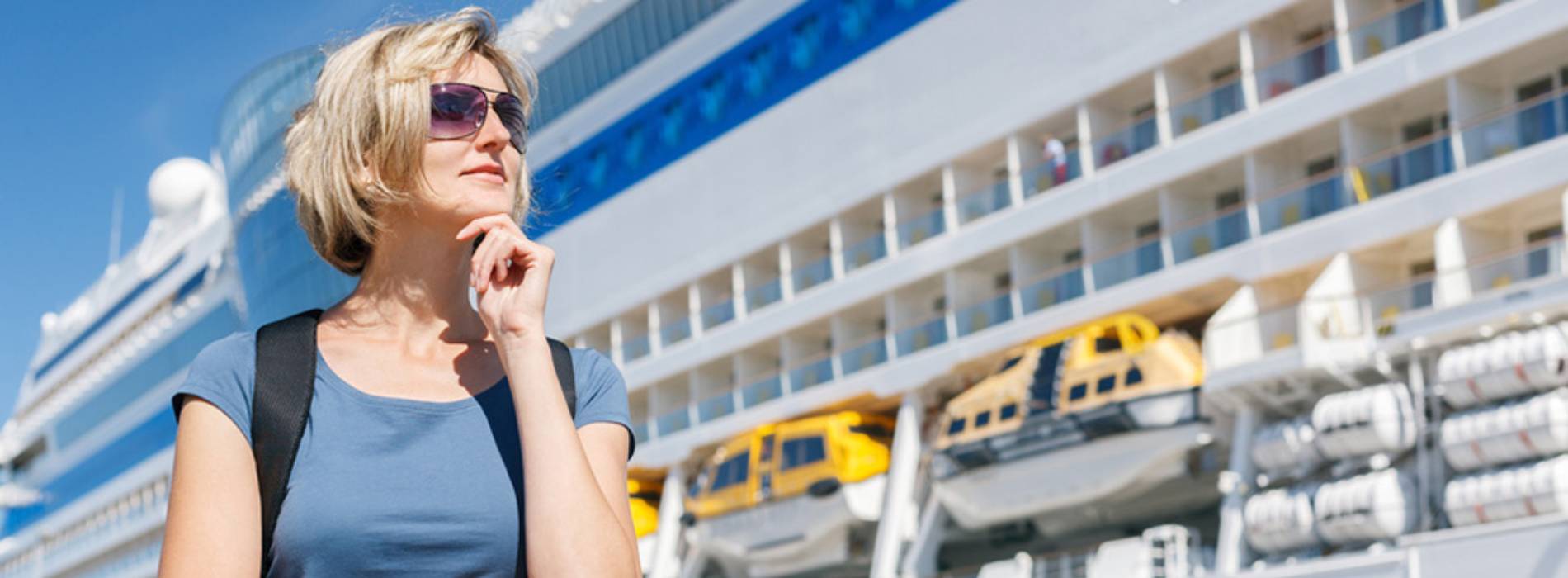How Do You Communicate on a Cruise Ship?
How Do You Communicate on a Cruise Ship?
Using Ship-to-Ship Communication Devices
When it comes to communicating on a cruise ship, there are various options available. One of the most common methods is using ship-to-ship communication devices. These devices, such as walkie-talkies or two-way radios, allow passengers and crew members to stay connected throughout the ship. They are convenient and easy to use, with features like group channels and privacy codes to ensure clear and secure communication.
Ship-to-ship communication devices are especially useful during excursions or when exploring different parts of the ship. It allows larger groups to stay together and coordinate their activities effectively. Whether you're planning to meet up for a meal or participate in onboard activities, having a ship-to-ship communication device can make communication seamless and hassle-free.
Using In-Room Phones
Another way to communicate on a cruise ship is by using the in-room phones provided in your cabin. These phones allow you to make calls to other cabins or even to other parts of the ship, such as guest services or room service. In-room phones are particularly useful when you need to contact specific individuals or services directly.
Many modern cruise ships now offer a digital communication system that allows passengers to message each other using their smartphones or other personal devices. This feature is often available through a downloadable app or by connecting to the ship's Wi-Fi network. It offers a convenient and user-friendly way to stay in touch with fellow passengers or with crew members.
However, it's important to note that using in-room phones or digital communication systems may incur additional charges, so it's wise to check with the cruise line about any associated fees before making excessive use of these services.
Using Public Announcement Systems
Cruise ships also utilize public announcement systems to communicate important information to passengers and crew members. These systems typically consist of speakers placed throughout the ship, including public areas, cabins, and even outdoor spaces. They are commonly used to make announcements about safety procedures, itinerary changes, or onboard activities.
When onboard, it's essential to pay attention to announcements made on the public address system, as they may contain vital information that could impact your cruise experience. If you are in your cabin and cannot hear the announcements clearly, there is usually an option to tune in to the announcements through the cabin's television or radio system.
Overall, cruise ships employ a variety of communication methods to ensure effective and efficient communication among passengers and crew members. Whether it's using ship-to-ship communication devices, in-room phones, or public announcement systems, these communication options help create a seamless and enjoyable experience while sailing the seas.
Using Signage and Visual Communication
In addition to technological forms of communication, cruise ships also utilize signage and visual communication to convey important information to passengers. Signage plays a significant role in guiding guests throughout the ship and providing essential information about safety protocols, onboard amenities, and directions to various locations.
Signs can be found in common areas, such as lobbies, hallways, and elevators, as well as in individual cabins. They often use clear and concise language, along with appropriate symbols, to convey messages effectively. This ensures that passengers can navigate the ship easily and locate important facilities or services without confusion.
Using Nautical Flag Signals
Cruise ships may also use nautical flag signals as a visual form of communication. Nautical flags are internationally recognized symbols representing different letters and meanings. They can be displayed on the ship's mast or other designated areas to convey messages to other ships or to passengers and crew members.
These flags can communicate a variety of information, such as weather warnings, emergency signals, or general announcements. While passengers may not be expected to understand every nautical flag signal, it can be an interesting and educational experience to learn some of the basics and decipher the messages being communicated.
Additionally, many cruise ships offer classes or workshops on nautical flag signals, allowing passengers to gain a deeper understanding of maritime communication and its historical significance.
Using Visual Displays and Digital Screens
Visual displays and digital screens are another common method of communication on cruise ships. These displays can be found in various locations, such as the ship's main lobby, entertainment venues, or near dining areas. They provide information about upcoming events, daily schedules, dining options, and onboard promotions.
These digital screens are easy to read and often include vibrant images or videos to capture passengers' attention. They are regularly updated to keep passengers informed about the ship's activities and ensure they don't miss out on any exciting events or offerings during their cruise.
Whether it's through signage, nautical flag signals, or digital screens, visual communication on a cruise ship enhances the overall experience by effectively conveying important information and adding a touch of nautical charm to the surroundings.
Using Non-Verbal Communication
Beyond technological and visual forms of communication, non-verbal communication also plays a role in effectively interacting with others on a cruise ship. Non-verbal cues, such as body language and gestures, can convey messages, emotions, and intentions without the need for spoken words.
In a multicultural environment like a cruise ship, where passengers and crew members come from diverse backgrounds and speak different languages, non-verbal communication becomes even more vital in bridging language barriers and fostering understanding.
Smiling and Eye Contact
One of the simplest yet impactful forms of non-verbal communication is smiling and making eye contact. A warm smile and direct eye contact can instantly convey friendliness, approachability, and a willingness to engage with others. Whether it's a fellow passenger or a crew member, a smile and eye contact can create a positive and welcoming atmosphere onboard.
Making eye contact while interacting with others also shows attentiveness and respect, signaling that you are actively listening and interested in what they have to say. This simple gesture can facilitate effective and meaningful communication, even if there are language barriers between individuals.
Using Gestures and Pointing
Gestures and pointing can be useful when trying to convey specific messages or directions without words. For example, if you are looking for a particular location or need help with something, you can use hand gestures or pointing to communicate your needs. Similarly, crew members might use gestures to guide passengers during emergency drills or direct them to specific assembly points.
However, it's important to be mindful of cultural differences, as certain gestures or hand signals may have different meanings or be considered offensive in some cultures. When in doubt, it's best to rely on universal gestures, such as a thumbs-up or a nod of affirmation, which are generally understood across different cultures.
Respecting Personal Space and Boundaries
Non-verbal communication also includes respecting personal space and boundaries. In a confined space like a cruise ship, it's important to be mindful of others' personal space and avoid unnecessary physical contact. Respecting personal space helps create a comfortable and respectful environment, allowing everyone to enjoy their cruise experience without feeling crowded or uncomfortable.
Navigating the social dynamics of a cruise ship relies on mutual respect and understanding, and being aware of non-verbal cues can contribute to fostering positive relationships and interactions while onboard.
Using a combination of ship-to-ship communication devices, in-room phones, public announcement systems, signage, nautical flag signals, visual displays, digital screens, and non-verbal cues, passengers can effectively communicate and navigate the cruise ship environment. These various methods ensure that everyone can stay connected, informed, and have an enjoyable time while cruising the beautiful seas.
Sailing the seas, whether it's on a luxurious cruise ship or a small sailing vessel, is an exhilarating experience that offers the opportunity to explore the wonders of the ocean. For passionate sea lovers, being surrounded by nautical symbols and marine animals is a dream come true. At [Your Company Name], we understand the deep connection between sea enthusiasts and their love for all things nautical. Through our exquisite collection of nautical jewelry, clothing, and home decorations, we aim to bring the spirit of the sea into your everyday life, allowing you to carry a piece of the ocean with you wherever you go.























